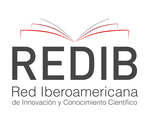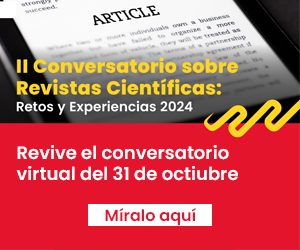Variación del perímetro cefálico en prematuros menores de 34 semanas expuestos a corioamnionitis histológica
DOI:
https://doi.org/10.20453/rnp.v86i3-1.4977Palabras clave:
perímetro cefálico, corioamnionitis histológica, prematuro, sepsis, neonatoResumen
Objetivo: Analizar las variaciones del perímetro cefálico (PC) en prematuros menores de 34 semanas expuestos a corioamnionitis histológica (CAH), y observados hasta los 2 años de edad corregida. Material y métodos: Estudio de cohorte secundaria de dos estudios prospectivos. Los datos correspondieron a mediciones del PC al nacimiento, a las 40 semanas y a los 2 años de edad corregida. La variación del PC se analizó en los prematuros con y sin exposición a CAH. La CAH se analizó de acuerdo con los subtipos subcorionitis/corionitis, corioamnionitis y corioamnionitis más funisitis. Resultados: De 91 prematuros incluidos, el 41,8 % (38/91) tuvo CAH. El promedio del PC al nacimiento fue de 27,7 cm (percentil 31,2) en los expuestos y de 28,3 cm (percentil 42,1) en los no
expuestos (p = 0,039); a las 40 semanas y a los 2 años, los promedios fueron similares. El subtipo corioamnionitis estuvo asociado con un menor PC (p < 0,05). La menor edad gestacional al nacer (p < 0,005) se relacionó con una mayor velocidad de crecimiento craneal. La CAH y el retardo de crecimiento intrauterino (RCIU) fueron los factores determinantes del menor PC en las tres edades evaluadas, y la sepsis confirmada solo tuvo lugar a las 40 semanas. Conclusiones: Los prematuros menores de 34 semanas expuestos a la CAH tuvieron menor percentil de PC al nacimiento; se observó recuperación del percentil de PC a las 40 semanas; y, finalmente, el subtipo corioamnionitisse relacionó con un menor PC a los 2 años de edad corregida. El factor RCIU potencia esta asociación en las tres
edades y la sepsis solo a las 40 semanas. Se recomienda realizar futuros estudios para confirmar estos hallazgos
Descargas
Citas
Kim CJ, Romero R, Chaemsaithong P, Chaiyasit N, Yoon BH, Kim YM. Acute chorioamnionitis and funisitis: definition, pathologic features and clinical significance. Am J Obstet Gynecol [Internet]. 2015; 213 (4 Supl.): S29-S52. Disponible en: https://www.ajog.org/article/S0002-9378(15)00910-2/fulltext
Guillén N, Llerena C, Samalvides S, Vila J, Juárez T, Cáceres J. Riesgo de daño cerebral en prematuros menores de 34 semanas expuestos a corioamnionitis histológica, Lima, Perú. Rev Peru Med Exp Salud Pública [Internet]. 2020; 37(2): 229-238. Disponible en: http://www.scielo.org.pe/scielo.php?script=sci_arttext&pid=S1726-46342020000200229
Guillén-Pinto D. Diagnóstico de las lesiones cerebrales en los prematuros menores de 34 semanas: incidencia, factores asociados y pronóstico [tesis de doctorado en Internet]. Lima: Universidad Peruana Cayetano Heredia; 2004. Disponible en: https://renati.sunedu.gob.pe/handle/sunedu/3410016
Instituto Nacional de Estadística e Informática. Encuesta Demográfica y de Salud Familiar 2015: Nacional y Departamental [Internet]. Lima: INEI; 2015. Disponible en: https://www.inei.gob.pe/media/MenuRecursivo/publicaciones_digitales/Est/Lib1356/
Thomas W, Speer CP. Chorioamnionitis: important risk factor or innocent bystander for neonatal outcome? Neonatology [Internet]. 2011; 99(3): 177-187. Disponible en: https://pubmed.ncbi.nlm.nih.gov/20881433/
Anblagan D, Pataky R, Evans MJ, Telford EJ, Serag A, Sparrow S, et al. Association between preterm brain injury and exposure to chorioamnionitis during fetal life. Sci Rep [Internet]. 2016; 6: 37932. Disponible en: https://www.nature.com/articles/srep37932
Gall AR, Amoah S, Kitase Y, Jantzie LL. Placental mediated mechanisms of perinatal brain injury: evolving inflammation and exosomes. Exp Neurol [Internet]. 2022; 347: 113914. Disponible en: https://www.sciencedirect.com/science/article/abs/pii/S0014488621003228?via%3Dihub
Ahlfors K, Ivarsson SA, Bjerre I. Microcephaly and congenital cytomegalovirus infection: a combined prospective and retrospective study of a swedish infant population. Pediatrics [Internet]. 1986; 78(6): 1058-1063. Disponible en: https://pubmed.ncbi.nlm.nih.gov/3024098/
Carter RC, Jacobson SW, Molteno CD, Jacobson JL. Fetal alcohol exposure, iron-deficiency anemia, and infant growth. Pediatrics [Internet]. 2007; 120: 559-567. Disponible en: https://publications.aap.org/pediatrics/article-abstract/120/3/559/71202/Fetal-Alcohol-Exposure-Iron-Deficiency-Anemia-and?redirectedFrom=fulltext
Berkowitz G, Wetmur JG, Birman-Deych E, Obel J, Lapinski RH, Godbold JH, et al. In utero pesticide exposure, maternal paraoxonase activity, and head circumference. Environ Health Perspect [Internet]. 2004; 112(3): 388-391. Disponible en: https://ehp.niehs.nih.gov/doi/10.1289/ehp.6414
Dobbing J. The later growth of the brain and its vulnerability. Pediatrics [Internet]. 1974; 53(1): 2-6. Disponible en: https://pubmed.ncbi.nlm.nih.gov/4588131/
Freud A, Wainstock T, Sheiner E, Beloosesky R, Fischer L, Landau D, et al. Maternal chorioamnionitis & long term neurological morbidity in the offspring. Eur J Paediatr Neurol [Internet]. 2019; 23(3): 484-490. Disponible en: https://www.ejpn-journal.com/article/S1090-3798(18)30458-6/fulltext
Sung JH, Choi SJ, Oh SY, Roh CR, Kim JH. Revisiting the diagnostic criteria of clinical chorioamnionitis in preterm birth. BJOG [Internet]. 2017; 124(5): 775-783. Disponible en: https://obgyn.onlinelibrary.wiley.com/doi/10.1111/1471-0528.14176
Mu SC, Lin CH, Chen YL, Ma HJ, Lee JS, Li MI, et al. Impact on neonatal outcome and anthropometric growth in very low birth weight infants with histological chorioamnionitis. J Formos Med Assoc [Internet]. 2008; 107(4): 304-310. Disponible en: https://www.sciencedirect.com/science/article/pii/S0929664608600911?via%3Dihub
Ochoa TJ, Zegarra J, Bellomo S, Cárcamo CP, Cam L, Castañeda A, et al. Randomized controlled trial of bovine lactoferrin for prevention of sepsis and neurodevelopment impairment in infants weighing less than 2000 grams. J Pediatr [Internet]. 2020; 219: 118-125. Disponible en: https://www.jpeds.com/article/S0022-3476(19)31717-2/fulltext
Redline RW, Faye-Petersen O, Heller D, Qureshi F, Savell V, Vogler C. Amniotic infection syndrome: nosology and reproducibility of placental reaction patterns. Pediatr Dev Pathol [Internet]. 2003; 6(5): 435-448. Disponible en: https://journals.sagepub.com/doi/10.1007/s10024-003-7070-y
Onyango AW, Pinol AJ, De Onis M. Managing data for a multicountry longitudinal study: experience from the WHO Multicentre Growth Reference Study. Food Nutr Bull [Internet]. 2004; 25(1): S46-S52. Disponible en: https://pubmed.ncbi.nlm.nih.gov/15069919/
Fenton T. A new growth chart for preterm babies: Babson and Benda's chart updated with recent data and a new format. BMC Pediatr [Internet]. 2003; 16(3): 13. Disponible en: https://bmcpediatr.biomedcentral.com/articles/10.1186/1471-2431-3-13
Zea-Vera A, Turin CG, Ochoa TJ. Unificar los criterios de sepsis neonatal tardía: propuesta de un algoritmo de vigilancia diagnóstica. Rev Peru Med Exp Salud Pública [Internet]. 2014; 31(2): 358-363. Disponible en: http://www.scielo.org.pe/scielo.php?script=sci_arttext&pid=S1726-46342014000200026
Xiao D, Zhu T, Qu Y, Gou X, Huang Q, Li X, et al. Maternal chorioamnionitis and neurodevelopmental outcomes in preterm and very preterm neonates: a meta-analysis. PLoS One [Internet]. 2018; 13(12): e0208302. Disponible en: https://journals.plos.org/plosone/article?id=10.1371/journal.pone.0208302
Maisonneuve E, Ancel PY, Foix-L’Helias L, Marret S, Kayem G. Impact of clinical and/or histological chorioamnionitis on neurodevelopmental outcomes in preterm infants: a literature review. J Gynecol Obstet Hum Reprod [Internet]. 2017; 46(4): 307-316. Disponible en: https://www.sciencedirect.com/science/article/abs/pii/S2468784717300338?via%3Dihub
Granger C, Spittle AJ, Walsh J, Pyman J, Anderson PJ, Thompson DK, et al. Histologic chorioamnionitis in preterm infants: correlation with brain magnetic resonance imaging at term equivalent age. BMC Pediatr [Internet]. 2018; 18(1): 63. Disponible en: https://bmcpediatr.biomedcentral.com/articles/10.1186/s12887-018-1001-6
Williams MC, O’Brien WF, Nelson RN, Spellacy WN. Histologic chorioamnionitis is associated with fetal growth restriction in term and preterm infants. Am J Obstet Gynecol [Internet]. 2000; 183(5): 1094-1099. Disponible en: https://www.ajog.org/article/S0002-9378(00)37659-1/fulltext
Nelson KB, Dambrosia JM, Grether JK, Phillips TM. Neonatal cytokines and coagulation factors in children with cerebral palsy. Ann Neurol [Internet]. 1998; 44: 665-675. Disponible en: https://pubmed.ncbi.nlm.nih.gov/9778266/
Yoon BH, Jun JK, Romero R, Park KH, Gomez R, Choi JH, et al. Amniotic fluid inflammatory cytokines (interleukin-6, interleukin-1beta, and tumor necrosis factor-alpha), neonatal brain white matter lesions, and cerebral palsy. Am J Obs Gynecol [Internet]. 1997; 177(1): 19-26. Disponible en: https://www.ajog.org/article/S0002-9378(97)70432-0/fulltext
Barrington, KJ. The adverse neuro-developmental effects of postnatal steroids in the preterm infant: a systematic review of RCTs. BMC Pediatrics [Internet]. 2001; 1: 1. Disponible en: https://bmcpediatr.biomedcentral.com/articles/10.1186/1471-2431-1-1
















